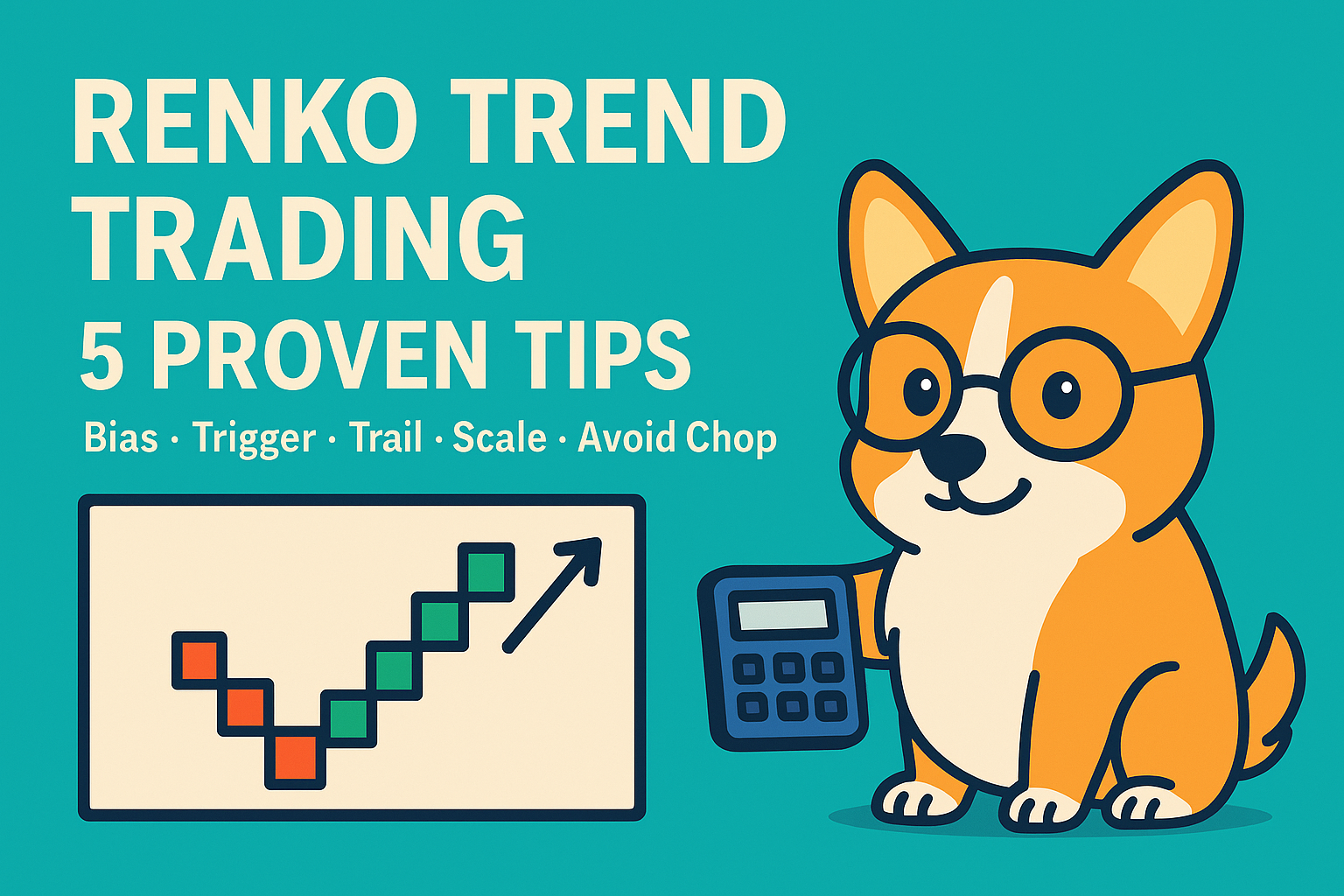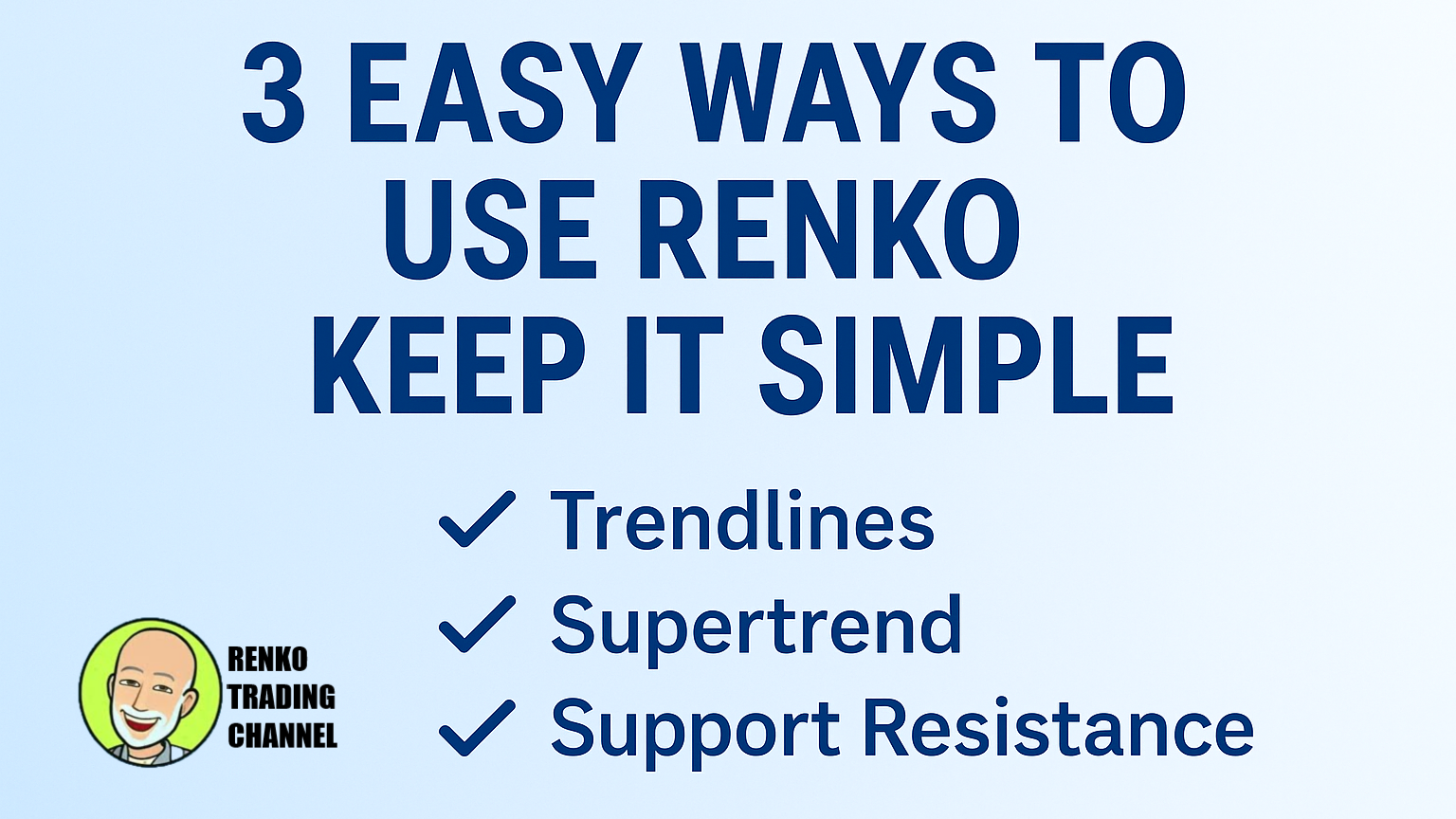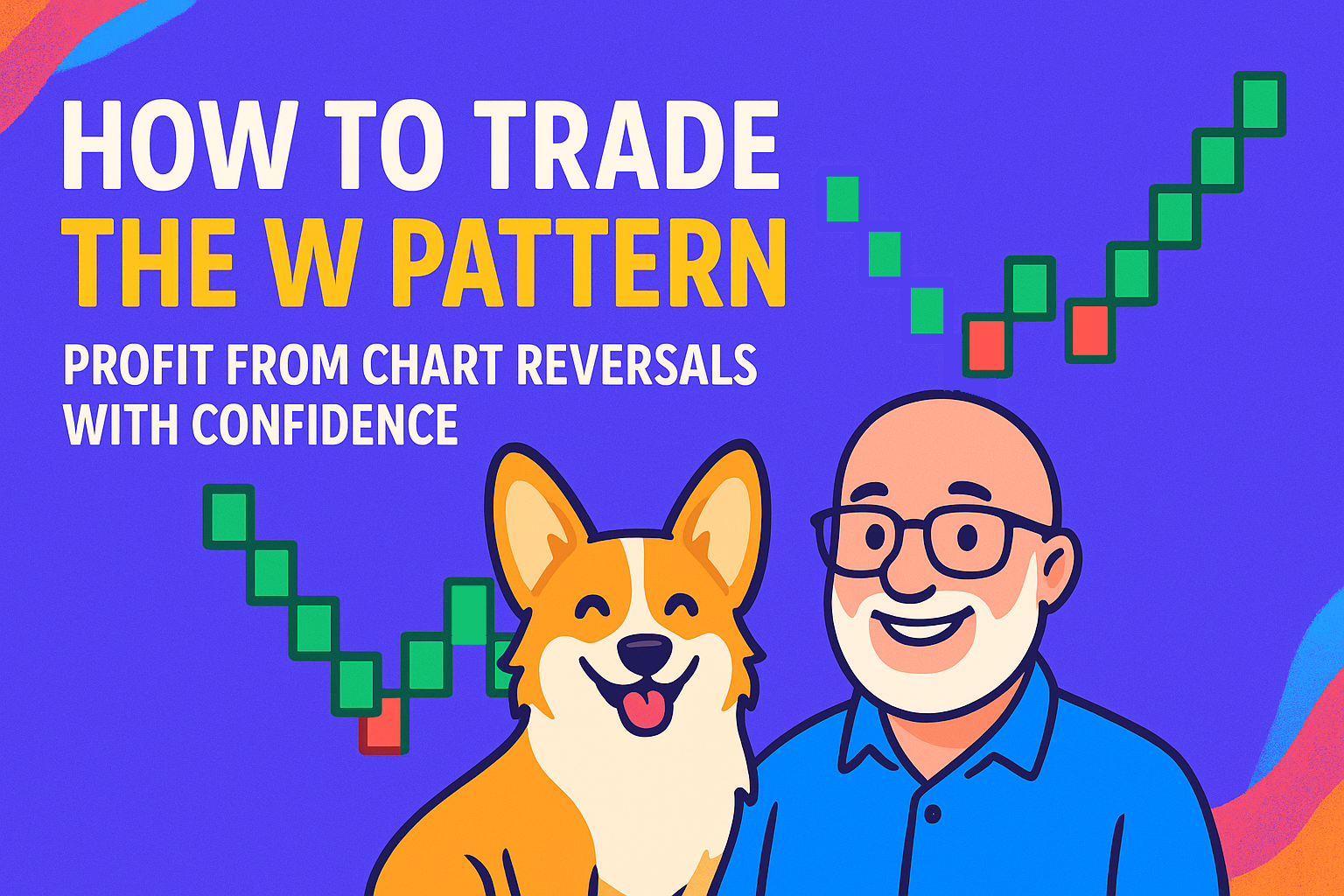This video lesson breaks down practical Renko trend trading: how to set directional bias, wait for confirmation, trail stops consistently, scale in and out, and avoid chop. Includes real Renko […]
Video: Renko Investing Strategy – How I Use Renko Charts for Smarter Long-Term Decisions
Understanding the Renko Investing Strategy If you’re a mid- to long-term investor and not a day trader, this Renko investing strategy will show you how to use Renko charts to […]
5 Proven Tips for Successful Renko Trend Trading
Updated: November 9, 2025 — Practical Renko trend trading rules with clean entries, consistent trailing, and scaling tactics. Renko charts filter small price noise by printing fixed-size “bricks” only when […]
Video: 3 Easy Renko Chart Strategies — Keep It Simple
🎥 Video Introduction If you’ve been looking for Renko chart strategies that actually simplify your trading, this guide is for you. In this video, I’ll walk through three easy and […]
How to Trade the W Pattern | Profit from Chart Reversals with Confidence
The W pattern is one of the most powerful and reliable chart reversal signals used by technical traders. This guide breaks down how to spot the W pattern in real-time, what confirms the setup, and how to time your entries and exits for maximum profit. If you’re looking to strengthen your trading edge with chart patterns, this is a must-know formation.
Watch: How to Trade Renko Chart Buy & Sell Signals + W & M Patterns (Complete Strategy Guide)
Table of Contents
What Is a W Pattern in Trading?
The W pattern (double bottom) is a bullish reversal made of two distinct troughs (lows) separated by a swing high (the neckline). The pattern completes when price breaks and closes above the neckline. Many traders wait for a decisive close above the neckline before entry; conservative traders prefer a retest of the neckline turning into support.
How to Identify the W Pattern on a Chart
The two troughs don’t have to be perfectly symmetrical. Rough similarity is common, but it’s normal for one trough to be slightly lower/higher. What matters most is the clear neckline (the swing high between troughs) and a strong breakout through it.
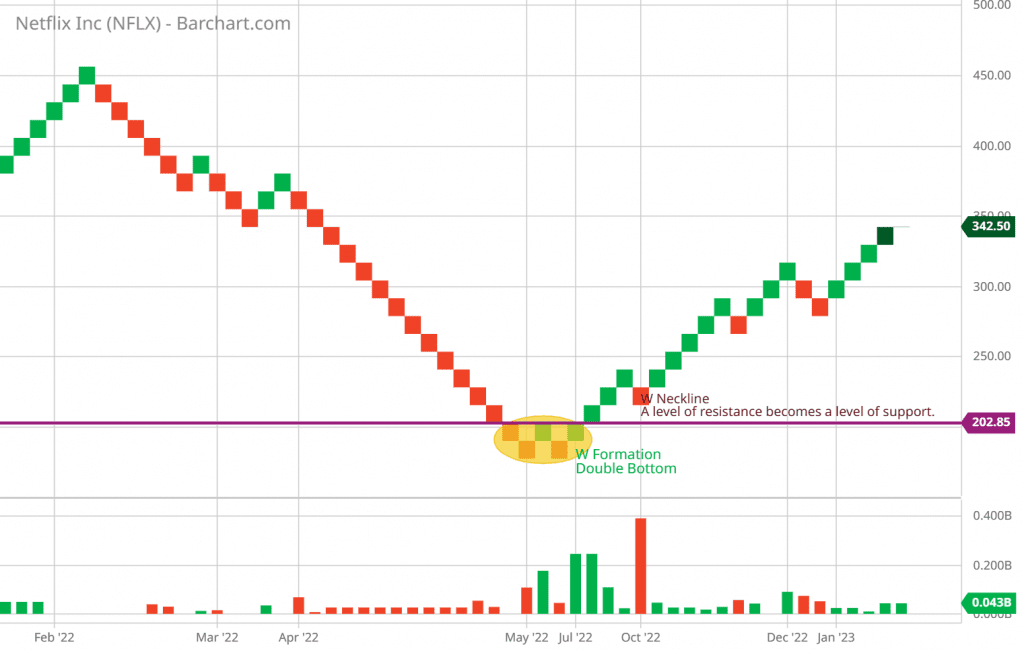

How to Trade the W Pattern Step by Step
When the W pattern forms, it signals a potential shift from downtrend to uptrend. Entries are typically taken on a decisive close above the neckline (or on a retest of the neckline that holds as support). Always define risk before entry.
Entry, Stops, & Targets
Invalidation: A sustained move back below the neckline after breakout weakens the pattern.
Entry: Close above the neckline (aggressive) or successful neckline retest (conservative).
Stop-loss: Commonly below the second trough (more conservative) or below the retest low if entering on a pullback.
Target (measured move): Measure the vertical distance from the neckline down to the lower of the two troughs (or their average), then project that distance upward from the neckline.
How to Trade W Pattern in Forex or Stock
- Identifying the Formation:
- Recognize the W pattern on the chart, indicating an upcoming upward move in the market.
- Strategic Buying:
- Wait for a close above the neckline or a successful neckline retest before entering long.
- Comprehensive Analysis:
- Incorporate the W pattern into your overall market analysis.
- Avoid relying solely on the pattern; integrate it with fundamental and technical analyses for optimal results.
When to Trade the W Pattern
The W pattern proves effective as a bullish signal in specific market conditions:
- Market context:
- Best after a downtrend or range where sellers begin to lose momentum.
- Key characteristics:
- Trough 1 → Neckline → Trough 2: Two lows separated by a clear swing high.
- Approximate symmetry is fine: The two troughs need not be identical.
- Confirmation: A decisive break/close above the neckline completes the pattern.
- Buy signal:
- Enter on a close above the neckline (aggressive) or on a successful neckline retest (conservative).
- Be prepared for false breakouts; define risk and stick to your stop.
📌 W Pattern in Forex, Stocks, and Crypto
The W pattern is a universal chart formation that shows up across all markets. Whether you’re trading currencies, stocks, or cryptocurrencies, the psychology behind the pattern remains the same: sellers lose momentum at the second bottom, and buyers step in to push prices higher. Still, each market has unique characteristics:
- Forex: In forex trading, the W pattern often appears after extended downtrends during major sessions. Because currency markets are highly liquid, traders usually wait for confirmation with volume indicators or a breakout candle above the neckline before entering.
- Stocks: Stock traders frequently use the W pattern to spot reversal opportunities after earnings dips or sell-offs. A breakout above resistance can suggest strong institutional buying, making it a popular setup on daily and weekly charts.
- Crypto: Due to high volatility, W patterns in crypto can complete quickly, sometimes within hours. Traders typically combine the pattern with moving averages or RSI divergence to avoid false signals and confirm stronger reversals.
👉 The key takeaway: the W pattern adapts well across asset classes, but confirmation tools and timeframes matter depending on the market you trade.
📌 Indicators That Confirm a W Reversal
While the W pattern is powerful on its own, traders often look for technical indicators to confirm the reversal before committing capital. Some of the most effective confirmations include:
- Volume Breakouts: A sharp increase in volume when price breaks above the neckline strengthens the signal that buyers are stepping in.
- RSI Divergence: If the Relative Strength Index shows higher lows while price forms lower lows, it suggests selling pressure is weakening — a classic bullish divergence that supports the W formation.
- Moving Averages: When short-term moving averages (e.g., 10- or 20-period) cross above longer-term ones, it aligns with the bullish reversal implied by the W pattern.
- MACD Crossovers: A MACD line crossing above the signal line after the second bottom can reinforce the bullish outlook.
👉 By combining chart structure with indicator confirmation, traders can filter out false setups and increase their confidence in W pattern trades.
W Pattern vs. M Pattern (Double Top)
In contrast, the M pattern, also known as the double top, signifies an impending market decline. Here’s how to navigate it:
- Formation Recognition:
- Identify the M pattern on the chart, indicating an upcoming downward move.
- Strategic Selling:
- Short on a decisive break/close below the neckline (the swing low between the two tops).
- Stops: Often above the second top; conservative traders use above the higher top.
- Target (measured move): Distance from neckline to higher top, projected downward.
- False Signals:
- Be aware of the potential for false breakout signals and have a strategy to address them.
In summary, mastering the W pattern involves strategic buying, thorough analysis, and risk management. Always be mindful of the market context and consider the M pattern as a contrasting signal for potential market declines.
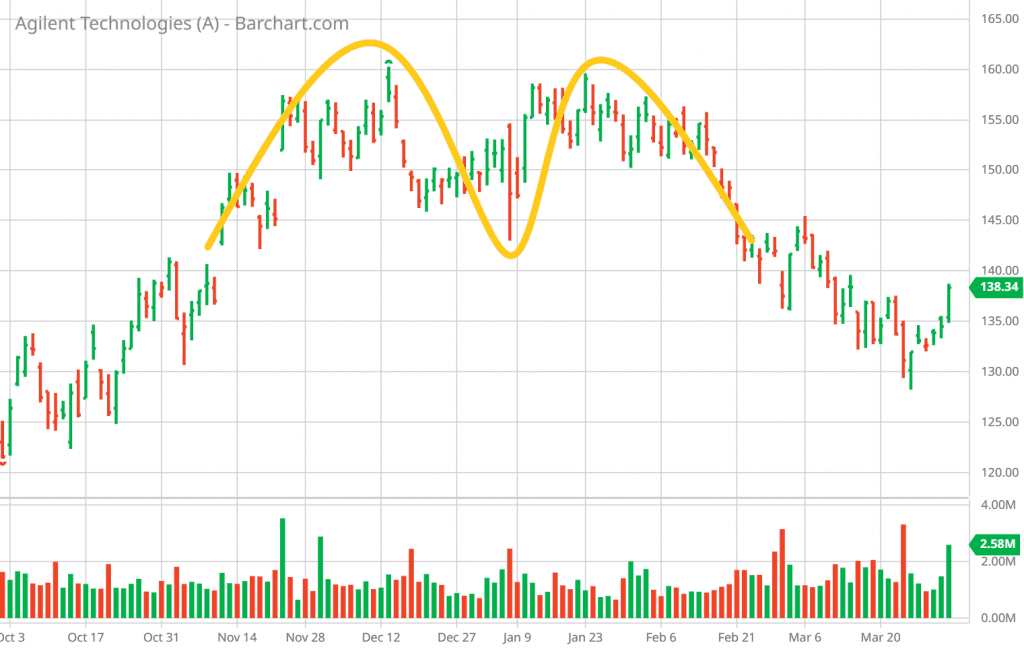
📌 Advantages and Disadvantages of Trading the W Pattern
Like any chart formation, the W pattern has both strengths and weaknesses. Understanding these will help you decide when to use it and when to be cautious.
✅ Advantages
- Clear Entry & Exit Points: The neckline provides a natural breakout level, while the second bottom acts as a reference for stop-loss placement.
- Strong Reversal Potential: Because the pattern forms after sellers fail twice to push prices lower, it often signals the beginning of a meaningful trend change.
- Works Across Markets & Timeframes: The W formation is visible in forex, stocks, and crypto, from intraday charts to weekly setups.
- Easy to Spot: Even newer traders can visually recognize the double-bottom shape without advanced tools.
⚠️ Disadvantages
- False Breakouts: Prices can sometimes break above the neckline temporarily and then reverse back down, trapping early buyers.
- Patience Required: The second bottom may take time to form, and traders who enter too early risk premature losses.
- Confirmation Needed: Without volume or indicator support, the W pattern alone may not provide enough evidence of a true reversal.
- Risk of Overuse: Traders may force the pattern onto price action that doesn’t fully meet the criteria, leading to inconsistent results.
👉 The bottom line: The W pattern is powerful when combined with patience and confirmation tools, but relying on it alone can expose you to unnecessary risk.
❓ Frequently Asked Questions about the W Pattern
Is the W pattern bullish or bearish?
The W pattern is generally considered a bullish reversal signal. It forms after a downtrend and suggests the market is likely to turn upward once the second bottom is confirmed.
What timeframes work best for W pattern trading?
The W pattern can be applied across multiple timeframes, but traders often find it most reliable on the 1-hour, 4-hour, and daily charts. Longer timeframes help filter out noise and provide stronger reversal signals.
Which indicators confirm a W reversal?
Popular indicators that help confirm a W pattern include:
- Volume spikes at the breakout level
- RSI divergence showing weakening selling pressure
- Moving average crossovers pointing to trend reversal
These tools provide extra confirmation before entering a trade.
How does the W pattern compare to the M pattern?
The W pattern is bullish, signaling an upward reversal, while the M pattern is bearish, signaling a downward reversal. Both are double-formation chart patterns, but they suggest opposite market outcomes.
Final Thoughts on W Pattern Trading
In conclusion, the W pattern emerges as a valuable and reliable technical indicator for traders aiming to enhance their profitability in the markets. Its simplicity, coupled with the ability to identify reversals and optimize timing, makes it an attractive choice for investors. However, traders should be mindful of its limitations, including the potential for false signals, and consider incorporating the W pattern into a comprehensive trading plan that includes other indicators and analysis tools. With practice and experience, traders can leverage the strengths of the W pattern to bolster their success in the dynamic world of stock trading.


